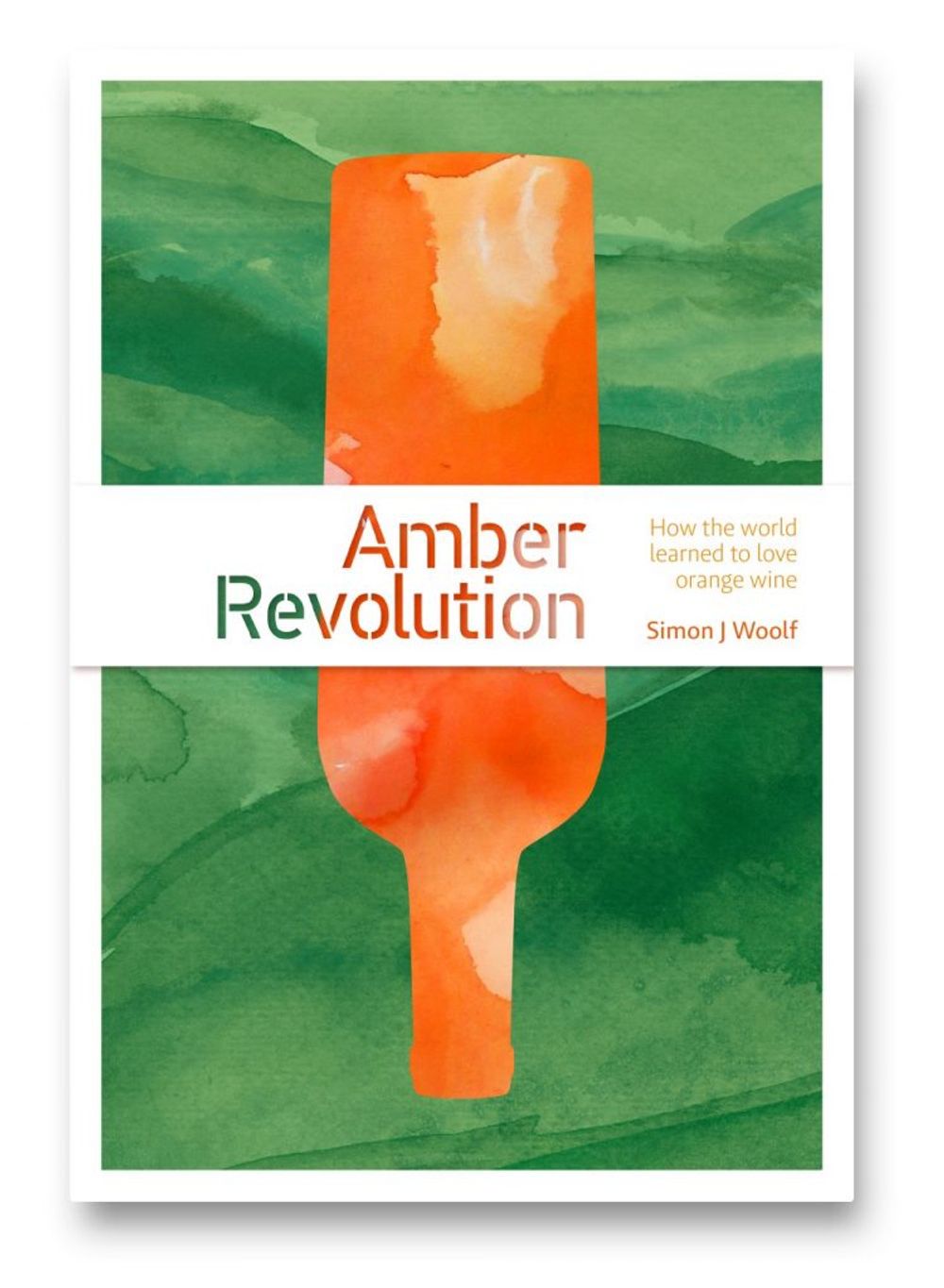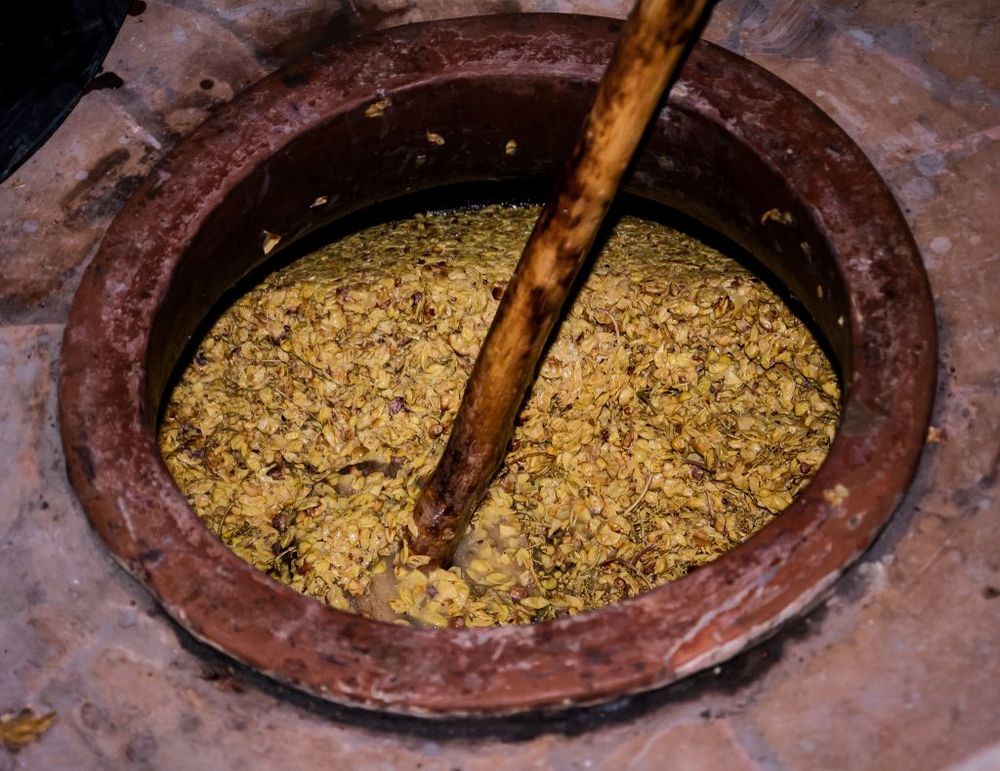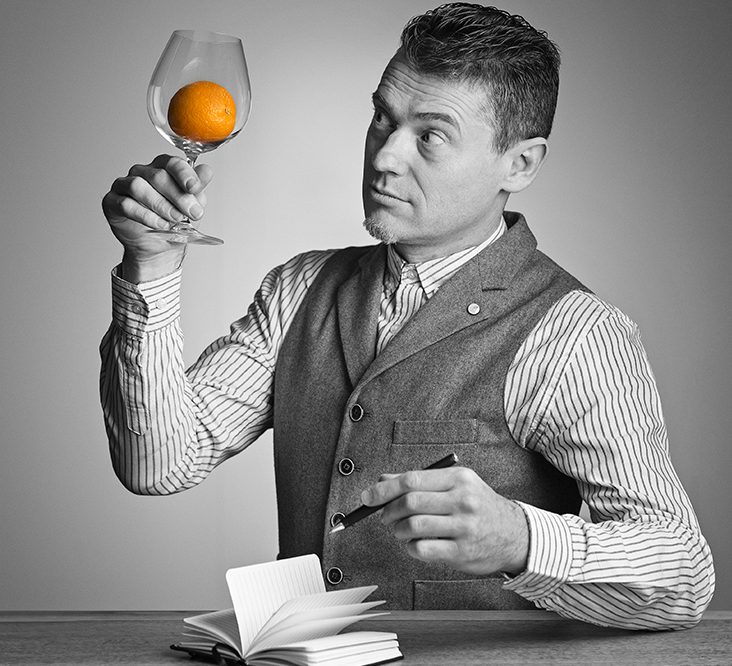If you like your orange wines then here’s a chance to prove it. Simon J Woolf hopes to bring his story about the development of orange wines to the publishing world with his own book, The Amber Revolution, but need Kickstarter support to make it happen. Here he explains why he finds orange wines so fascinating and important for the wine industry.

One of the wine trade’s epidemic weaknesses is a tendency to navel gaze, based on wishful thinking rather than hard facts. For example, we’re all sick of hearing how Riesling or sherry are going to become fashionable again, or those stories about how wine style “x” is “going” to be the next big thing.
The spate of articles in the last year or two about orange wine’s supposed runaway popularity might fall into this category – amusing hype, but commercial reality? Really?
Yes, really. There was an interesting factual nugget buried in Bibendum’s latest market analysis which claims that orange wines are also starting to “excel”, it appearing on around 44% of what it calls Mode lists and increasingly even getting their own dedicated sections on wine lists. Forty four per cent is significant – in other words, almost half the UK’s top restaurants see orange wine as the new frontier, the “must have” to be regarded as cutting edge. Even five years ago, this level of market penetration would have seemed like a distant dream.
This is not to say that these mostly premium priced wines, almost inevitably produced in small quantities, are going mainstream – but then neither are other trendy wine niches such as the Jura, Etna or Priorat.
Orange for all

Must in a traditional qvevri. Picture by Ryan Opaz
Orange wine – or amber wine to give it the name preferred by most Georgian producers, and its most important pioneer Joško Gravner – does have an advantage over those regions. It can be produced anywhere in the world. The name is in some ways no more or less generic than “white wine”, “red wine” or “rosé wine” – even if it comes with a good many more specific associations.
At its core, “Orange wine” just describes a technique, a way of treating white grapes as if they were read. Many will argue that the classic orange wines, the vini bianci macerati of Friuli or Western Slovenia are those produced with wild yeast ferments and no temperature control, typically unfiltered and with minimal or no added sulphur dioxide: ergo, natural wines.
It’s certainly true that this is the authentic style long practised throughout history, however one of the most fascinating parts of the orange explosion is watching producers in different parts of the world incorporating long skin maceration of white grapes into their repertoires in different ways.
Not all of the resulting wines are successful, at least in the opinion of this writer, but the sheer volume of possibilities, new flavours and pushing of boundaries is exciting. It’s surely this dynamism that has helped drive countless young sommeliers behind the cause of the “Amber Revolution”.
For the record

An extract from Simon J Woolf’s new book; Amber Revolution looking at the history and opportunity for orange wines
There’s just one missing component. There’s no go to reference work which covers orange wine’s fascinating history and its present day manifestation. I decided to write that book in 2013.
When I started seriously researching the subject, I realised I’d bitten off a huge hunk of historical and oenological meat. Not only is there a long and rich history of the style in Friuli and Slovenia, but this story then links to the republic of Georgia where the original “amber wines” have been made in qvevri for at least 8,000 years. And that’s without even mentioning other interesting “amber” strongholds such as Croatia or the Alentejo in Portugal.
Spliced into a history of lost identities and cultures, wars, strife and destruction are the personal tales of the individuals who survived and brought long skin maceration back onto the wine agenda. These stories are gripping enough to read like a good novel, and that’s how this book is structured.
A page turner…
There are enough worthy reference books in the wine world, many of which look good on the bookshelf but are seldom read. I didn’t want to add another to the canon, so I’m aiming for a cracking read – a true bedtime book which grips the reader but also educates.
Orange wine still suffers from many misconceptions – that its colour means the wines are oxidised, that it’s a synonym for natural wines, that it’s made from oranges, that it’s always made in amphorae. The list goes on. I sincerely hope that Amber Revolution will dispel some of those myths – or at least provide its fans with ammunition and a counter charge.
Amber Revolution might also provide confidence for on-trade buyers, sommeliers and restaurant owners, that this is a serious movement, not a flash-in-the-pan hype. And that the wines are some of the most versatile, exciting and profound to be found on any wine list today.
No bombs will be thrown, no fists locked in this revolution – corks will be popped, orange wines slurped. And maybe, just maybe in a few years time we can stop talking about how orange wine “is going to be the next big thing” and accept that it has a valid place on the list, just like any other style or region.









































